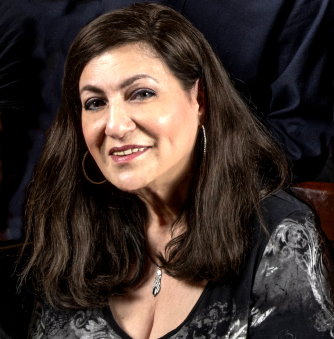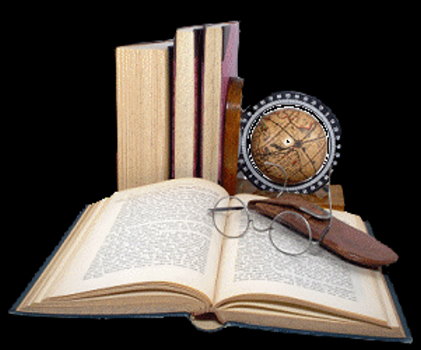
 Welcome to my web site!
Welcome to my web site!
Doreen Molloy
Published Studies
![]()
Page Links
![]() What to Expect From a Psychic Reader
What to Expect From a Psychic Reader
![]() Personal PowerPoint Presentations
Personal PowerPoint Presentations
![]() Proof Positive, Metaphysical Wisdom
Proof Positive, Metaphysical Wisdom
![]() Proof Positive: Book Introduction
Proof Positive: Book Introduction
![]() FAQ for Developing Psychics & Mediums
FAQ for Developing Psychics & Mediums
![]() Grief Recovery / Experiencing Loss
Grief Recovery / Experiencing Loss
![]() Working with Psychic Medium, John Edward
Working with Psychic Medium, John Edward
![]() On the Music Scene with Strange Brew!
On the Music Scene with Strange Brew!
![]() 2012 - And the End of the Mayan Calendar
2012 - And the End of the Mayan Calendar
![]()
Published Studies

To have a greater understanding of how research experiments work, visit the web site for EXPLORE, The Journal of Science and Healing for information on the University of Arizona's PROTOCOLS during triple blind studies. Protocols performed by the Mediumship Communication Research Project of the VERITAS Research Program were specifically designed to investigate the information provided by research mediums and the process by which they received it.
Many of these studies were double-blind and triple-blind experiments which were designed to rule out all other possibilities - meaning, other than actual mediumship communication. As of January 1, 2008 the VERITAS Research Program concluded its research studies... however mediumship research continues on at the Windbridge Instiitute.
The following article is from the Winter/Spring 2005 Issue [Volume 2, Issue 1] of Signs of Life. It describes a research experiment that Doreen Molloy took part in, written by Julie Beischel, Ph.D., Former Assistant Director of the VERITAS Research Program, at the Human Energy Systems Laboratory, University of Arizona.
~ Ask The Scientist ~
How is it that mediums can sometimes get
accurate information about loved ones who have died?
The Deceased's Role
in the Success of Experimental Design
Three of the main theories – other than survival of consciousness after death – offered to explain the accuracy of information conveyed by a medium during a research reading are as follows:
1) The medium is using non-verbal clues (facial expressions, gasps, etc.) from the sitter – the living person hoping to contact the deceased – to guide what information is conveyed. This is called 'cold reading'.
2) The medium is repeating things the sitter has said in a way that makes them seem like original statements. This is called 're-phrasing'.
3) The medium is reading the mind of the sitter and reporting that information. This is called 'telepathy'.
To control for the first two possible explanations, experiments performed at the Human Energy Systems Laboratory involve 'blinding' of the medium. That is, the medium cannot hear or see the sitter and is given little to no information about the sitter's identity. At most, the medium may be informed of the sitter's or deceased's first name (example, 'Paul') and/or the relationship of the deceased to the sitter ('brother'). This prevents the medium from using any verbal or non-verbal cues from the sitter during the reading.
However, it is theorized that even with no contact with the sitter, the medium may still be able to read his/her mind. Although this is difficult to control, we have employed a way for the deceased to disprove the telepathy theory: During a reading, we ask the deceased to give information that is unknown to the sitter, the medium or the experimenter, but that can be verified later.
We perviously reported one strikingly evidential answer we received to this question during a presentation at the Tribute to Montague 'Monty' Keen held at the Royal Society of Arts (RSA) in London on June 27, 2004. At this Tribute entitled "Mediumship, Survival and Psychical Research", Mrs. Veronica Keen (Monty's wife), the Society for Psychical Research [SPR] (http://www.spr.ac.uk/index) and numerous researchers paid homage to Monty and his nearly 60 years of psychical research, writing, and lectures. The Tribute took place in the room at the RSA where Monty had died during a public debate about telepathy six months prior. While making an elegantly worded statement from the front row to a skeptic at the debate, Monty had suffered a heart attack and never regained consciousness. It was presumed that he died either at the RSA or on the way to the hospital. (He was officially pronounced dead at the hospital.)
During a telphone experiment on June 10th, 2004, in which Veronica Keen was the 'absent' sitter (explained below) and Doreen Molloy, author of Proof Positive: Meatphysical Wisdom, served as the research medium, the request for unknown but verifiable information was asked of Monty. Doreen was in New Jersey, I was in Arizona and Veronica was in London during the experiment. However, only Doreen and I were on the telephone, so Veronica was 'absent' and therefore not aware of the content of the reading. Thus, Doreen received no feedback from Veronica. This experimental design is referred to as 'double-blind', meaning both the sitter and the medium have been blinded.
The complete double-blind experimental design consisted of five sections. In the first section, called Free-form, Doreen was informed there was an absent sitter and asked to receive information from any deceased people associated with the sitter. In the second section, called Deceased-directed, Doreen was instructed to receive information from the husband of the absent sitter who usually called the sitter 'Darling'; she was given neither Veronica's nor Monty's name. For the third and fourth sections, Doreen was asked to report the answers to specific questions about Monty's physical life and his experiences in the afterlife, respectively. For the last section, in response to the 'Unknown Information' question, Doreen described, "Some kind of an error or mistake on the death certificate. And it would be relating to the area on the certificate where they list your cause of death and/or time of death. It's not a misspelling of the name [typo] or something like that... but there's some kind of error."
Could this statement be verified?
While in London for Monty's Tribute, I asked Veronica if she was aware of any mistake related to Monty's death certificate; she said "No". However, I asked Veronica to show me the death certificate and to verify each line - Monty's middle name, their home address, the date, etc.
In the section of the certificate where the time of death was listed, the hospital at which Monty was pronounced dead was also named. I pointed to the name and asked Veronica, "Is this right? Is this where he died?"... wondering if the name was somehow wrong. Her answer was simple (paraphrasing): "God, no! He died in his seat at the RSA!".
The information in a research reading is intended for and scored for accuracy by the sitter based on their knowledge and interpretations. The item stating that there was a mistake on the death certificate was in direct response to a question requesting information that was unknown to any living person involved in the experiment - but that could be verified.
Note that Veronica had been unaware of any mistake, but during the verification confirmed that the place of death listed on the certificate was in her opinion, incorrect. Veronica felt that Monty's consciousness left his body in that lecture hall at the RSA and considered that the place of death.
This single item from one double-blind reading demonstrates: 1) How cold reading, re-phrasing, and telepathy can sometimes be ruled out as explanations for the accuracy of a medium's statements; and 2) How the deceased can participate in the success of controlled laboratory protocols for research readings.
~ Julie Beischel, PhD
VERITAS Research Program
Human Energy Systems Laboratory
The University of Arizona
![]()
![]()
